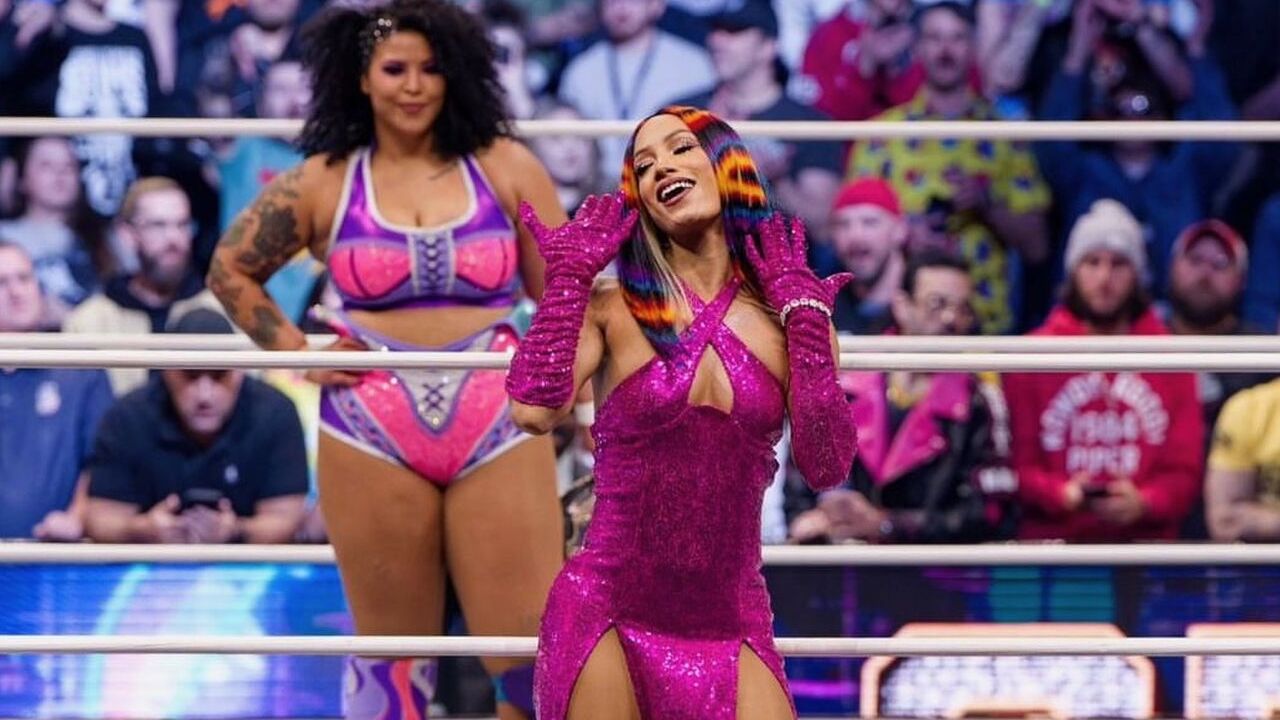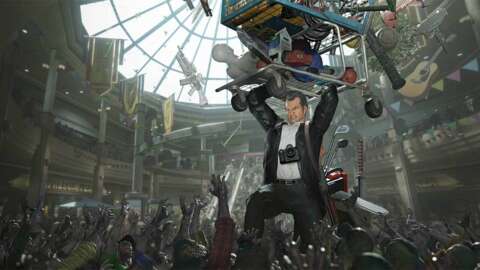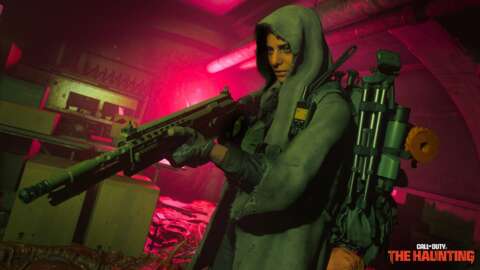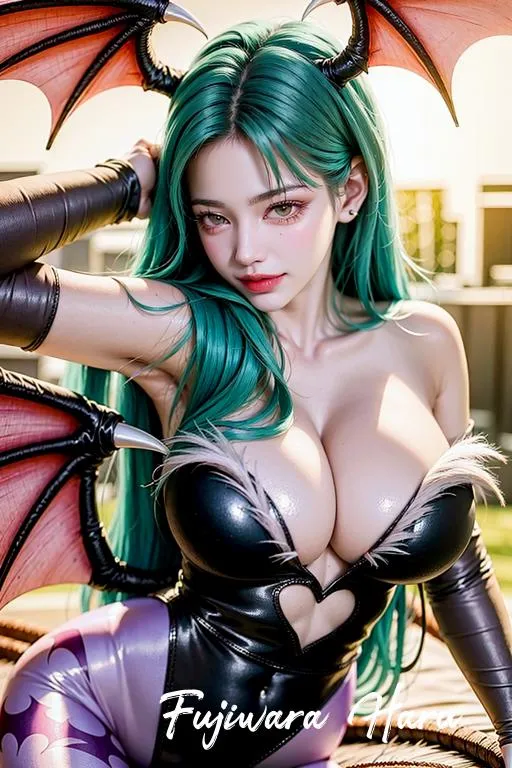Hope you're fully enjoying 90s Week here at IGN, as we take stock in how the pop culture from 30 years ago played a crucial role in shaping today's entertainment. Since we're all totally buggin' out, talking to the hand, taking chill pills, and just generally trippin', we might as well check in with TV and look at all the awesome ways 90s television gave way to the new Golden Age (which some clock with The Sopranos starting in '99).
Young single roommates all of a sudden became ground zero for sitcoms - as well as single stand-up comedians! Gen X, in general, was given more dramatic programming than previous young generations ever had thanks to veteran producer Aaron Spelling kicking things off with a very famous zip code. Star Trek, which had made the miraculous leap from TV to movies made a second miracle move by once again going to TV (in the late 80s) and thriving with an expanded universe and brand new characters in the 90s.
Twin Peaks brought a touch of the cinematic weird to the masses, helping pioneer "Water Cooler TV" in the process while The X-Files and NYPD Blue both changed the procedural game in very different, distinct ways. We owe so much now to the game-changing TV of the 90s that it can be hard to keep track of it all. Instead, let us fill you in on some of the biggest moments that carved notable paths for the TV we watch and love today.
Peak TV
Yes, the term "Peak TV" may have been coined by FX Content/FX Prods. chairman John Landgraf in response to the rapid increase of scripted TV shows due to the arrival of streaming sites over the last 10 years, but at one point, in 1990, all eyes were on one TV show... and it was Twin Peaks. Sure, the show didn't last past its second season, but Season 1's eight episodes, which aired in the spring of '90, created an instant phenomenon. We're talking a broad TV audience embracing nightmare cinema's David Lynch in a massive way, as well as an off-kilter, unconventional TV show that dabbled in both magic and sci-fi.
Twin Peaks helped create the template for a few things. Firstly, it was a founding father of "Water Cooler TV" as well as long-form mystery TV. As in, it wasn't just a new murder case every week; it was the one murder case. Who killed Laura Palmer? And that made for a show that people talked about with each other, pre-internet, "around the water cooler" at work the next day. New clues, new theories. All the things we do now online.
Secondly, Twin Peaks helped bridge the gap between movies and TV. The divide between the two mediums used to be pretty big. When a TV star became a movie star it was a huge deal (like Bruce Willis). Most who tried that never quite made it. Same for directors. So when you've got Lynch seemingly taking a step "backwards" to TV, it made the series feel loftier and more demanding of attention. Over the past few decades, the movie/TV line has all but dissipated. Meryl Streep's been nominated for 21 Oscars and next week she'll be on the third season of Only Murders in the Building and it's no big deal. It's fun, but it's not a thing.
Twin Peaks also introduced a different visual language to TV. Something more artful, more beautiful, more interesting. This was an auteur's hand at work in a medium that never really had the need for it. Without Twin Peaks setting a certain standard, we wouldn't have something like Breaking Bad or Better Call Saul, which could feel like we were watching an arthouse movie every week. With those shows, TV had a cinematic style. You'd see landscapes, machines, cinnabons being baked, and sometimes long stretches would go by with no dialogue at all. This wasn't exactly Twin Peaks' M.O., sure, but it helped break the medium in all the right ways. It got 35 million people watching a show with horror and sorcery and cryptic dreams and people being turned into doorknobs and s***. There was no going back.
It's notable too that Twin Peaks was co-created by Mark Frost, who was a writer and executive story editor for 80s police series Hill Street Blues, which was lauded for pushing the cop show genre forward in huge, historic ways.
The Truth Is Out There... and It Changed the Procedural
Twin Peaks may have only been "stealth" sci-fi, at best, but sci-fi still thrived in the '90s thanks to the fledgling network Fox's show about two FBI agents assigned to investigate the little seen world of the odd and unexplained. The X-Files, from creator Chris Carter, took the traditional beats of a "case of the week" show and mismatched partners and infused it all with a crucial background story, a show "mythology," about the government's cover-up of extra-terrestrial life.
Most episodes were about David Duchovny's Fox Mulder and Gillian Anderson's Dana Scully snnooping around small towns and excavating local horrors, but lingering in the background was a larger mystery, a compelling conspiracy, that touched on our own real-life paranoia about alien life. The X-Files stretched the very bounderies of the cop show by blending monster of the week episodes, bottle episodes, zany episodes (body-swapping, breaking the fourth wall, etc.), and an over-arching serialized mythology.
Many procedurals going forward would become hybrids like The X-Files, combining weekly cases with a longform mystery connected to the protagonist(s). The X-Files also led to more genre TV, having proven that sci-fi could be big business. Fringe, Person of Interest, Supernatural, Evil, Warehouse 13, Lucifer... and even non-magical shows like The Blacklist and Blindspot all followed.
While open-minded Mulder and skeptic Scully were hitting the big time with little green men and flying saucers, another, more traditional procedural was also making waves... and moving TV forward into the unknown.
NYPD Blue was a cop show. Television, once the Western had dried up as a genre, relied heavily on doctor/lawyer/cop - shows set in hospitals, court rooms, or precincts. But NYPD Blue was about to test the limits of 10pm programming with sex, language, and complex, morally grey situations that didn't always have the police in the right. You didn't always root for these characters. They were majorly flawed, in most cases. Another Hill Street Blues alum, creator Steven Bochco, was taking a huge risk with this series, which was only complicted by the fact that breakout star David Caruso left after two seasons to become a movie star (it didn't work - see how hard it used to be!).
NYPD Blue, which aired on ABC, showed bare butts and side boob (this was a big deal for network TV) while also allowing its characters to say "s***" and "a**hole" (again, never done before). Controversy swirled around this series because these cops were anti-heroes. The core of the series, Dennis Franz' Andy Sipowicz, was a loud, racist drunk. Sure, the character eventually got sober, but that's a hell of a lead for a cop show. NYPD Blue started in 1993 and ran for 12 freakin' seasons. And it proved that audiences were hungry for more mature, more complex, more challenging programming. Without it, who knows what HBO original programming would have become. The pipeline sort of goes Hill Street Blues, NYPD Blue, Oz (1997), The Sopranos (1999), The Wire (2002)... and so on. It started on regular network TV but then premium cable grabbed hold and the Anti-Hero Era officially began.
By the way, basic cable would also get in on the game too a decade later with Breaking Bad, The Shield, Damages, Sons of Anarchy, and so on.
Beverly Hills... That's Where I Want to Be
The combination of MTV and home video game consoles slowly changed kids in the 80s. The decade began with older Gen X playing outdoors, sunup to sundown, while the late 80s saw younger Gen X enjoying quality indoor time. There were Def Leppard videos to watch and Castlevania III to beat. Since more kids than ever were huddled around the TV, for longer stretches of time... why not give them their own shows? And not just shows that come on after school. Not just shows that could be "enjoyed by the whole family." Shows for them kids.
Not all 80s primetime dramas were cops and lawyers and such. There were also Night Soaps. You had your Dynasty, Falcon Crest, Dallas, Knots Landing, and so on. It was grown-ass rich people behaving badly and it was a big thing for a while. But what if there was a primetime soap for high-schoolers? Hence, Beverly Hills 90210 was born. Creator Darren Star (Sex and the City, Emily in Paris) saw an opportunity to reach an untapped audience: This was going to be a drama centered around teens, dealing with serious topics like date rape, homophobia, drug abuse, domestic violence, and eating disorders.
And from 90210, an entire TV ecosystem was born.
Not only did 90210 have its own spinoffs (Melrose Place, Models, Inc, spiritual spinoff The Heights), but there were other early attempts to capture teen authenticity, for both laughs and tears. My So Called Life (1994) and Freaks and Geeks (1999) were both ahead of their time, sadly, while tackling the turmoil of suburban high school angst (albeit from different angles). Both also featured major would-be stars, but would unfortunatley only last a season each.
The 90s became rife with Y/A dramas. Party of Five carried the torch nobly until The WB struck gold with both Dawson's Creek, Felicity, and yes... the paradigm-shifting Buffy the Vampire Slayer.
A failed movie, featuring a good idea that wasn't tonally executed right, became a pitch-perfect TV series that blended Y/A dramedy with horror hijinx. Buffy was a watershed moment for many viewers, becoming one of those shows, like ABC's Lost a decade later, that would inspire people to become TV writers.
Buffy fused genre TV, which had been growing in popularity, with Y/A drama, even using the X-Files TV template for procedural hybrid. On top of that, it introduced the concept of the "Big Bad" (a term actually used on the show itself) which is a seasonal villain that gets dispatched at the end - an antagonist that the show builds up to all year long before unleashing a big showdown in the finale. And shows continued to do it for years, like Dexter, Justified, Chuck, Spartacus, Supernatural, and Veronica Mars. Heck, even The Boys does a version of this now (which makes sense because creator Eric Kripke gave us Supernatural).
Eventually, The CW would usher in a brave new world of Y/A genre programming, utilizing the audience built up by The WB. Are we saying there's no Arrowvese without 90210? No. But we're also not not saying it.
Single and Ready to... Live in Rent-Controlled Luxury
Both Friends and Seinfeld, the powerhouse sitcom forces of the 90s, helped shift the TV comedy landscape in big ways. Sure, they leaned into different arenas of comedy, but they both for the most part portrayed young single friends hanging out in an apartment talking about their dating lives.
Previous to this, most sitcoms were either about a specific family (a married couple, or married couple with kids) or a workplace comedy where the characters were coworkers and/or patrons. Now, everyone had different jobs, families, trajectories, and goals, but still spent time with each other because... well, they liked each other.
Director Cameron Crowe has said that his 1992 movie Singles was the inspiration for Friends but Friends creators David Crane and Marta Kauffman have denied it. Either way, the early 90s were a heyday for beautiful young adults playing the field, looking for love, talking about sex, sharing their pet peeves, getting trendy haircuts, and owning monkeys. Friends and Seinfeld were also so notable and quotable that they changed our real life lexicon, inventing "friend zone," "mimbo," "shrinkage," "double dip," and, of course, the Costanza secular holiday extravaganza, Festivus.
Friends' huge impact created a ton of insta-clones (The Single Guy, Boston Common) with middling results, but the real effect would come years later with shows like How I Met Your Mother, New Girl, Happy Endings, Cougar Town, and even The Big Bang Theory.
Worth mentioning too is Living Single, which began a year before Friends and, while not becoming the cultural juggernaut that Friends did, ran for five seasons and showcased a tight-knit group of African American women besties who had successful careers.
Seinfeld had a few similarities to Friends but its lasting imprint was way different. At the time, it led to a ton of stand-ups getting their own sitcoms. And despite Ellen's short run, this formula had a way better track record that the Friends doppelgängers that sprung up. It was a blueprint that had already proven to be successful with many shows like The Bob Newhart Show, Roseanne, Sanford & Son, and Home Improvement - series that starred stand-up comedians and honed in on that comic's particular gimmick. But Seinfeld, strangely, made it seem like anyone could do it. There's a line in Jon Favreau's Swingers where his character confesses that he moved to LA because "they made it sound like they were giving out sitcoms to stand-ups at the airport."
The most successful 90s stand-up ventures in the wake of Seinfeld were Mad About You, The Drew Carey Show, Martin, Everybody Loves Raymond, and The King of Queens. An argument can be made though that Seinfeld's most important influence was its embracing of cringe-comedy and the idea that sitcom characters can be kind of awful - to others and each other.
Larry David's Curb Your Enthusiasm is the obvious successor here, but series like It's Always Sunny in Philadelphia (which now happens to be the longest-running live-action American sitcom), The League, Blue Mountain State, You're the Worst, Veep, Eastbound & Down, and more gave us lead characters or entire ensembles who are just broken, selfish, rotten people. As Seinfeld went on and became more surreal and subversive, it embraced - even ramped up - the lunacy of its leads and how fickle and self-centered they were. So much so that the series finale threw them in prison for being insensitive a-holes.
Let the Cartoons... Begin!
The 90s were a magical time for animation. A time when cartoons started catering to older viewers. Teens, young adults, and adults alike didn't have to "put away childish things" the way past generations did as animation grew alongside them. Disney films found their mojo again, after the wasteland of the 80s, and experienced a cinematic renaissance, while TV animation leveled up on all fronts.
Superhero movies had just started to become big business, provided you were Batman and only Batman, but on TV a much fuller comic book world was living its best screen life ever with Batman: The Animated Series (which gave us the character of Harley Quinn), Spider-Man, and X-Men. All were knockout showings that were faithful to the comics while also building up characters and storylines for a new generation. Had it not been for the fans of these shows - and even non-comic book based series like Gargoyles - there may not have been as a strong an audience for the Spider-Man and X-Men films that would kick off the 2000s. In fact, the original X-Men movies found tons of inspiration in the X-Men animated series.
And it wasn't just superhero fare that changed the animation game. MTV's Liquid Television, which helped launch Beavis and Butt-Head (and, by default, Daria) and Æon Flux, broke all the rules and went straight for college-age viewers. The same goes for The Ren & Stimpy Show. Things got weird. And very controversial. Without these series we wouldn't have experienced the glory of Cartoon Network's Adult Swim.
Keep in mind, too, that all of this was happening as animation broke into primetime with The Simpsons, Futurama, and Family Guy. Cartoons were made for everyone in the 90s and the ground that was broken back then helped create more of a widespread acceptance of the art form so that it wasn't merely seen as a separate genre but a method of storytelling like any other medium.
Boldly Going... Back to TV
Nowadays, we take for granted sprawling franchises that cross different media and mediums. We also take for granted legacy sequels and beloved things from our past returning to us after many, many years. 2006's Rocky Balboa helped popularize the decades-later sequel and we're still being bombarded with revivals to this day, whether it's movies like Blade Runner 2049, Ghostbusters: Afterlife, and Top Gun: Maverick or shows like Cobra Kai, Obi-Wan Kenobi, Ash vs Evil Dead, and - yes - Twin Peaks: The Return.
Star Trek was one of the first major franchises to actually expand and give us more. What does that mean exactly? Well, Trek had the rare fortune of being able to, a decade after its 60s TV run, become a successful movie franchise - with the original cast too, mind you. They were the same characters, just older, and the movies, which did very well in the 80s, acted as a sequel to the original show. In the late 80s, the decision was made to move forward with the Trek "universe" and The Next Generation was born with all new characters. The show was set far enough in the Federation's future that, without sci-fi trickery, the original cast couldn't really just pop in and pass the torch to the new folks.
It was a risky move, all in all. You have movies now; why go back to TV? Well, in ignoring the bizarre stigma of the time of TV being "lesser" than movies, and rolling the dice with an entirely different Enterprise crew, Trek had a huge resurgence in popularity. A new generation of fans was created and more TV shows (Deep Space Nine, Voyager, Enterprise) followed, making the 90s a haven for the franchise. It made such a cultural dent that we now, inherently, have room in our hearts for Trek resurgences, like the one we've experienced over the past six years with Discovery, Picard, Strange New Worlds, and more.
Star Trek going back to TV allowed it to deepen its lore and broaden its fanbase, and created a world that viewers wanted to explore more of on their own. Instead of just being a string of sequels with the same faces, it became a vast, shared universe (with crossovers!). And Star Trek: Deep Space Nine, in particular, became the 90s series that many fans look back on as the best. Originally the "odd one out" since it wasn't set on a planet-hopping exploratory spaceship, DS9 is now considered an incredible "ahead of its time" achievement because of its themes and methods of storytelling. Not only was it the most serialized Trek to date but it was also the darkest in tone. It got into horrors-of-war territory and anti-hero territory. And without something like DS9, we never would have gotten the excellently grim and complex Battlestar: Galactica reboot (from DS9 writer Ronald D. Moore).
Star Trek coming back to television, and triumphing the way it did, ensured its future, secured its legacy, and branched out its mythology in ways that Star Wars wouldn't attempt doing for many years later. We're now overly accustomed to big franchises just going on and on, taking breaks, and then coming back with revivals or prequels and so on. The 20-year gap between the first Star Trek series and The Next Generation let us know that there was always a possibility now that the gum we like could come back in style.
What are your favorite shows of the 1990s? Let's discuss in the comments!








